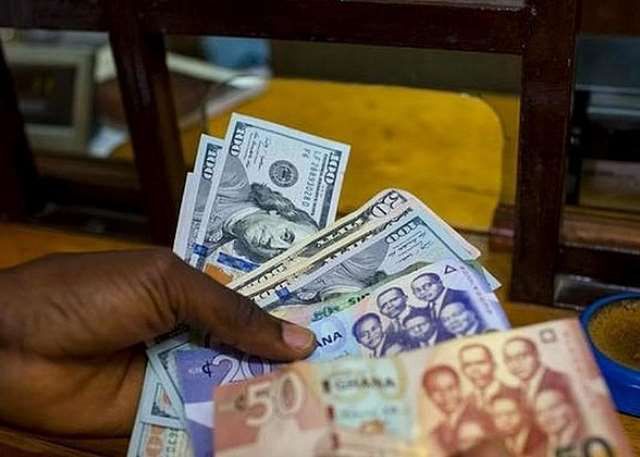The Ghanaian cedi experienced notable volatility against major international currencies on Friday, August 8, 2025, with varying exchange rates observed across different market segments. Cedirates.com, a trusted platform for tracking currency and fuel prices in Ghana, reported an average buying rate of GHS10.53 and an average selling rate of GHS11.04 for the US dollar. This indicates a spread of GHS0.51 between the buying and selling prices, reflecting the profit margin for currency traders. Forex bureaus, which provide over-the-counter currency exchange services, offered less favorable rates to customers, buying the dollar at GHS11.50 and selling it at GHS11.90. This wider spread of GHS0.40 highlights the higher costs associated with these transactions. The difference in rates between the average and forex bureaus suggests a more competitive landscape in the broader market compared to the direct customer-facing transactions at bureaus.
The Bank of Ghana’s interbank market, where banks and other authorized financial institutions trade currencies directly with each other, revealed a tighter spread. The cedi traded at GHS10.49 for buying and GHS10.51 for selling against the US dollar, a difference of only GHS0.02. This smaller spread is characteristic of the interbank market, where large volumes and lower operational costs contribute to more competitive pricing. The disparity between the interbank rates and those offered by forex bureaus indicates the markup applied by bureaus to cover their operating expenses and generate profits. It also suggests that individuals and businesses seeking to exchange smaller amounts of currency may face higher costs compared to large-scale transactions conducted within the interbank market.
The British pound also saw fluctuations against the cedi. Forex bureaus quoted an average buying rate of GHS13.91 and a selling rate of GHS14.72 for the pound, indicating a substantial spread of GHS0.81. This wider spread compared to the dollar suggests potentially higher volatility or lower trading volumes for the pound. The Bank of Ghana’s interbank rate for the pound was GHS14.11, positioned between the bureau’s buying and selling rates. This suggests that the interbank market offered a more favorable rate than forex bureaus for selling pounds but a slightly less favorable rate for buying them. The euro followed a similar pattern, with forex bureaus offering buying and selling rates of GHS12.15 and GHS12.83, respectively, reflecting a spread of GHS0.68. The interbank rate for the euro was GHS12.23, closer to the buying rate offered by forex bureaus.
Money transfer operators, specializing in remittances, offered competitive exchange rates for individuals sending money to Ghana. LemFi and Afriex, two prominent players in this space, provided attractive rates for US dollar, British pound, and euro transfers to Ghana. For dollar remittances from the US or UK, LemFi offered a rate of GHS10.45, while Afriex offered an even more competitive rate of GHS10.39. Both these rates were more favorable than the average market rate and significantly better than those offered by forex bureaus. This competitive pricing in the remittance market underscores the importance of this sector for the Ghanaian economy and the drive to provide cost-effective solutions for individuals sending money home.
For British pound remittances, LemFi offered a rate of GHS14.00, while Afriex offered GHS13.99, both marginally below the Bank of Ghana’s interbank rate. This competitive pricing suggests that money transfer operators are actively vying for market share by offering attractive rates to customers. For euro remittances, Afriex quoted GHS12.18, while LemFi offered a slightly higher rate of GHS12.21. Again, these rates were competitive compared to both forex bureaus and the interbank market. The favorable rates offered by these money transfer operators reflect the growing importance of digital remittance platforms in facilitating international money transfers and their role in minimizing transaction costs for individuals.
Digital subscription services, such as Netflix, Spotify, and Apple Music, utilized a consistent exchange rate of GHS11.34 for both Visa and Mastercard transactions. This standardized rate, while higher than the interbank rate, offers predictability for users of these services. It simplifies the payment process and avoids fluctuations that could occur with real-time currency conversions. The slightly higher rate likely accounts for processing fees and other associated costs involved in international digital transactions. Overall, the Ghanaian cedi’s performance against major currencies on August 8, 2025, highlighted the diverse landscape of the foreign exchange market, with varying rates across different segments. From interbank trading to forex bureaus and digital remittance platforms, the disparities in rates reflect the interplay of market forces, transaction costs, and competitive pressures within each specific area of currency exchange.


